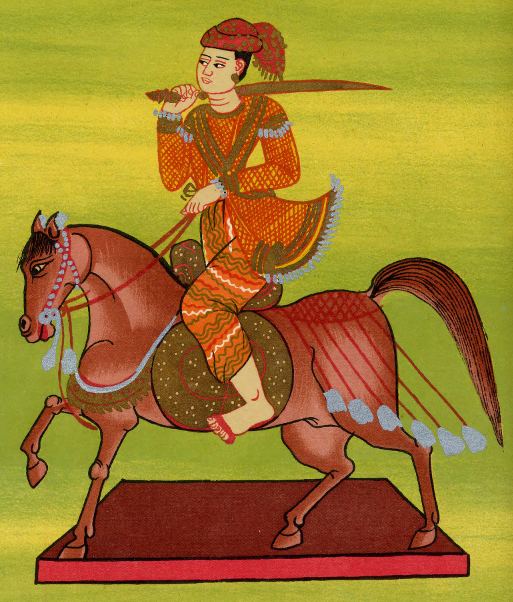Role King Parents Narathu Name Naratheinkha Naratheinkha | House Pagan Kingdom Religion Theravada Buddhism Successor Narapatisithu | |
 | ||
Reign c. February 1171 – c. May 1174 Died 1173, Bagan, Myanmar (Burma) Grandparents Alaungsithu, Yadanabon I of Pagan Great-grandparents Dhamma Kyin, Shwe Einthi, Saw Yun of Pagan | ||
Naratheinkha (Burmese: နရသိင်္ခ, [nəɹa̰ θéiɴkʰa̰]; 1141–1174) was king of Pagan dynasty of Burma (Myanmar) from 1171 to 1174. He appointed his brother Narapati Sithu heir apparent and commander-in-chief. It was the first recorded instance in the history of the dynasty that the king had given up the command of the army. The king was assassinated by Aungzwa, one of Sithu's servants, after the king had raised one of Sithu's wives to queen.
Contents
According to G.H. Luce, there is no inscriptional evidence that Naratheinkha or any kings between 1165 and 1174 ever existed. Other historians such as Htin Aung do not agree with Luce's "conjecture".
Early life
Naratheinkha was the eldest son of Narathu and Queen Myauk Pyinthe. Chronicles do not agree on his date of birth. The table below lists the dates given by the four main chronicles. Scholarship provisionally accepts the birth date as given in Zata's horoscopes section.
Naratheinkha grew up at the court of King Sithu I. He was not even in the line of succession as the heir apparent was his uncle Min Shin Saw. When he reached manhood, he married his second cousin Min Aung Myat, who like him was a grandchild of King Sithu I in marriage ceremony presided by the king himself.
In 1167, Naratheinkha suddenly became the heir apparent to the throne after his father assassinated both Sithu I and Min Shin Saw.
Reign
Naratheinkha came to power in 1171 after his father was killed by the assassins sent by the king of Pateikkaya, an Indian kingdom in the west. At accession, he made his brother Narapati Sithu the heir apparent and commander in chief. This was a significant change because it was the first recorded instance in the history of the dynasty that the king had given up the command of the army. Even a weak king like Saw Lu never gave up the command.
The new king was popular but his downfall soon came, according to the chronicles, due to his interest in Weluwaddy, a queen of Sithu. The king actually passed over marrying her but regretted the decision later after his brother took her. In 1174, Naratheinkha made up an excuse to send Sithu to the front in the far north at Ngasaunggyan (present-day Yunnan) to suppress a supposed rebellion. When he had confirmed that Sithu's army was at a distant fort, the king raised his sister-in-law to queen.
On his way to the frontier, Sithu got hold of the news by a messenger on horseback. Knowing he had been misled, Sithu then selected Aung Zwa, a commander from his army, to lead the effort to assassinate the king. Aung Zwa led a team of 80 soldiers, and sped down the river by boat without pause. At Pagan, the team infiltrated the palace, and Aung Zwa himself killed the king.
